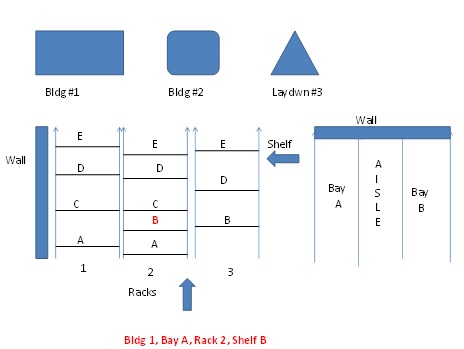A Warehouse Layout Guide

Stock locations may seem trivial, basic, and mundane, not warranting much time or space in the Supply Chain arena, but my 40 years of experience tells me if the fundamentals are misunderstood, incorrectly implemented, or ignored, you’re in for some very unpleasant surprises.
This has become especially relevant to me in light of 4 or 5 recent videos I’ve seen on the internet in the last month. One video showed a clip of the Amazon distribution center in New Jersey and two videos showed an Alibaba distribution center (don’t know the location) each showcasing a very high level of technology in a practical application (parcels being moved from a beginning location to what appears to be a cross dock/sorting operation) utilizing robots. https://www.linkedin.com/feed/update/urn:li:activity:6473265008737427456
Two very different videos show the entire racking system in two separate and distinct DC’s collapsing due to some boneheaded mistakes and sophomoric antics in the work place. These actions have no place in a work area because the actions had very serious repercussions. Workers probably died or at least suffered serious injuries as well as millions of dollars in lost product, damaged racking, damaged materials, and thousands of dollars in clean up as well as repair/reclamation efforts.
Now back to the issue at hand. Setting up a sensible, yet easy system to locate materials in a warehouse/distribution center, whether large, small or humongous is relatively straight forward when looked at properly.
- Place fast moving stock at the front near the issue window. This way, stock keepers won’t have so far to travel to retrieve parts. Productivity just went up!!!
- Place moderate to fast moving stock immediately behind the fastest movers. The same logic applies here.
- The slow movers go toward the back of the warehouse and the “never move” go to the second floor/mezzanine, to the very back, or another building that’s locked and are prime candidates for the CFO/Controller to write off as obsolete.
- Make and mark LARGE and legible signs indicating the designation. Clearly indicate all buildings, bays, rows, racks, and shelves. Posting a map of the aforementioned is a GREAT IDEA. See example below.

- Check your locations frequently and do it backwards by going to your stock location master (SAP (use MB51 or 52) and ORACLE (G46 enter 29, or G4641 use Loc Mstr ) locations are embedded with the part master). Make a list of a half dozen SKU’s and locations then go immediately to the warehouse and verify SKU and locations. Since you’re in the warehouse pick some random SKU and write down the location and once back in the office check those SKU’s and locations. If there are errors give your supervisor or cycle count person the assignment to correct the issues.
- Keep your location master accurate or you will have back orders, errors, lost inventory and write-offs.
Important tips for setting up a stock locator
- Alternate numbers and letters for buildings, bays, rows, racks, and shelves.
- Number or letter from the wall outward toward the aisles.
- Number or letter from the floor upward toward the top.
- When numbering the shelves, it’s important to skip numbers. For example use even numbers to allow for corrections, additions, and expansion.
- Do not use the following letters: I, L, O, Q, U, V, Z. If you need more than 19 letters go to AA, BB,CC, etc.
Well, there you go. That’s really all there is to it. With this guide, a little common sense, and some elbow grease you ought to have a great distribution center that you can be proud of.
Your path to business success.

